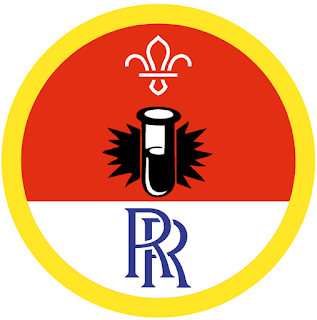Beavers and Cubs: Draw The Description
They say a picture is worth a thousand words, but can you turn words into an accurate image?
- Read
the description of the first person below.
- Draw
the person based on the description.
Draw the image you see in your minds as the person
is described. You could use coloured pencils to draw the most detailed version you
can.
- What
did you draw?
- What
are they wearing?
- What
size are they (tall, short, fat, thin)?
- What
colour is their skin?
- Do they
have a gender?
- How
old are they?
4.
Take a look at the
answer sheet. Chat about how similar to actual image of the person your drawing
is. What are the most significant differences in your drawing and the actual
image?
Why did you draw the description the way you did?
What about the description made you think the person looked a certain way?
5.
Repeat steps one
to five with the other person descriptions.
Person
1:
- I’ve won 11 Olympic gold medals.
- I’ve held over 30 world records.
- I’ve won the London Marathon six times.
- In 2019 I was awarded the Lifetime Achievement
Award at the BBC Sports Personality of the Year.
- In 2020, I was elected as the Chair of
Trustees for the Duke of Edinburgh’s Award (DofE)
Person
2:
- Growing up, I was one of the top tennis
players in North America.
- I studied for a PHD in astrophysics.
- I worked at NASA developing the Space
Shuttle’s robotic arm, which is used to deploy satellites.
- I am the youngest American astronaut to have
travelled into space.
Person
3:
- Being infected with tuberculosis as a teenager
inspired me to pursue a career in medical research.
- I created the world’s most effective drug for
fighting malaria, which has saved millions of lives.
- In 2015, I won the Nobel Prize in Physiology
or Medicine.
Person
4:
- I joined the U.S. Naval Reserve in world war
two and eventually became a Navy commander.
- I coined the term ‘computer bug’ after taking
apart a machine that wasn’t working a discovering a large moth inside it.
- I programmed one of the earliest computers.
- I created the first computer language
‘compiler’, which translates compute code into programming languages and
allowed people to write programmes for multiple computers.
- I was awarded the Presidential Medal of
Freedom.
Person
5:
- I co-founded a TV network, which I sold for
$2.9 billion in 2001.
- I served on the Executive Committee of the
United States Golf Association.
- I am currently the CEO of a luxury hotel
chain.
- I own a national ice hockey team and two
national basketball teams.
Reflection
Unconscious
bias is when we have stereotypes about certain groups of people without
realising it. For example, we might presume doctors are men and nurses are
women because we’re used to hearing about and seeing male doctors and female
nurses in the media. It may also mean that we expect achievements from some
groups of people and not others. This may come across unsupportive and can even
lead to prejudice. Everyone has unconscious bias as it’s part of how our brains
understand the world, so it’s really important to challenge the way we’ve
always seen and done things.
In
this activity, everyone drew people based on descriptions of the work they’ve
done and impact they’ve made. Think about the drawings which differed a lot
from the actual image. What was it that made you choose a certain age, race,
gender, size, or look for the person? This is a really difficult question, but
often we associate certain traits with certain jobs, personalities or
achievements. This is unconscious bias and is caused by lots of things, like
only learning about history from one perspective, or watching TV shows and
movies where characters are built on ignorant or harmful stereotypes.
There
are many ways to reduce unconscious bias. Can you think of some suggestions.
For example, you could:
- Engage with positive images of people of different genders, races
or abilities by reading stories like ‘Little Leaders: Exceptional Men in
Black History and Exceptional Women in Black History’ by Vashti Harrison
or films like ‘The Peanut Butter Falcon’.
- Talk about how people have been discriminated because of their
race, gender, sexuality, ability, and age. If you understand the problem,
you can better address it.
- Read more than one account of history. People’s perspectives and
experiences of what happened (and how it happened) differ.
This
activity completes:
Beavers
Creative Activity Badge – requirement 4
Cubs
Artist Activity Badge – requirement 1.a







